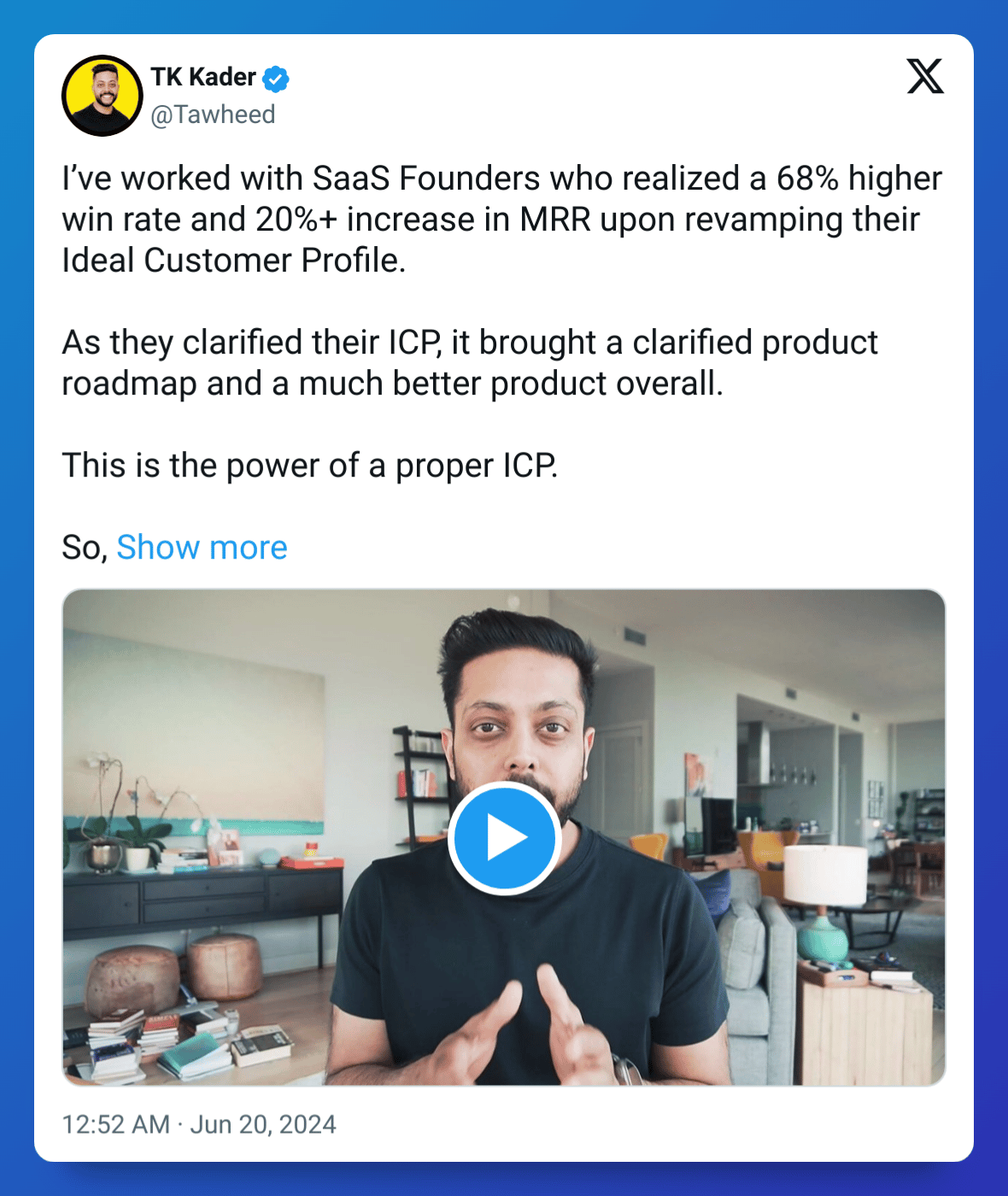- The GTM Guild
- Posts
- Before You Hit Send: The Hidden Power of a Sharpened ICP
Before You Hit Send: The Hidden Power of a Sharpened ICP
Crafting the Perfect ICP—Before You Ever Hit ‘Send’
Startups obsess over cold email copy, call scripts, and reply rates. But most outbound fails long before that—at the targeting stage.
If your message is great but your recipient is wrong, it doesn't matter. You’re not just wasting words. You’re missing momentum.
Before your SDRs write, before your founder hits DM, before that first campaign goes live—you need clarity on one thing:
Who exactly are you trying to reach—and why should they care?
Welcome to the ICP advantage: the most overlooked growth lever in outbound.
Run IRL ads as easily as PPC
AdQuick unlocks the benefits of Out Of Home (OOH) advertising in a way no one else has. Approaching the problem with eyes to performance, created for marketers with the engineering excellence you’ve come to expect for the internet.
Marketers agree OOH is one of the best ways for building brand awareness, reaching new customers, and reinforcing your brand message. It’s just been difficult to scale. But with AdQuick, you can plan, deploy and measure campaigns as easily as digital ads, making them a no-brainer to add to your team’s toolbox.
You can learn more at AdQuick.com
Why a Precise ICP is the Foundation of Every GTM Motion
ICP stands for Ideal Customer Profile—but don’t mistake it for a list of industries or vague firmographics.
A high-performance ICP is:
Specific enough to narrow focus
Rooted in problem awareness
Aligned with use case, not just title
Validated through conversations and data
Here’s what happens when your ICP is vague:
Low reply rates
Irrelevant objections
Misaligned demos
Product feedback that doesn’t move you forward
In short: Chaos!

Importance of ICP
The Pre-Send ICP Checklist
Before outreach begins, make sure your ICP has these layers:
1. Firmographics + Environment
Industry, size, location, funding stage
Tech stack used (Are they on HubSpot? Do they use Segment?)
GTM model: PLG vs SLG vs enterprise sales
Why it matters: Sets the boundaries of who can even benefit from your offer.
2. Job Titles + Roles
Who feels the pain you solve?
Who owns the budget?
Who is the power user vs. decision-maker?
Why it matters: Precision here avoids getting ghosted after 3 follow-ups.
3. Triggers + Timing
Did they just fundraise?
Are they hiring for roles related to your product?
Did they just switch CRMs?
Why it matters: Relevance is 10x higher when outreach is event-driven.
4. Pains + Priorities
What are they struggling with—today?
How do they currently solve this (or fail to)?
What internal language do they use to describe the pain?
Why it matters: Messaging lands only if it mirrors their own words.
5. Internal Champions
Who at this company will care enough to push internally?
Are they status quo challengers or defenders?
Why it matters: Champions close deals. Targets alone don’t.
Smart Outreach Starts with a Smart List
Before you build that campaign, stop and ask:
Are we targeting people who look like our best customers—or just people with cool titles?
Is there enough context in our list to personalize messages properly?
Have we validated this segment with discovery calls, not just assumptions?
If you skip this thinking and jump straight to messaging, even the best email copy won’t convert. It’s like trying to sell snow boots in the desert—with excellent grammar.
ICPs Are Not Static
Here’s the other trap: assuming your ICP is “done.”
Nope.
Your ICP should evolve as you:
Close more deals
Lose deals (and learn why)
Expand product features
Move up or down market
Build a feedback loop:
Feed outbound learnings back to marketing and product
Run mini “learning sprints” by testing variations of your ICP
Interview users who converted fast and ask: What made you say yes?
GTM Guild POV
Great outbound doesn’t start with “Hey (FirstName).”
It starts with knowing what problems are urgent for which people—right now.
ICP clarity is your first unfair advantage.
It sharpens your list, your copy, your close rate—and even your product roadmap.
So before you build a sequence, pause and ask:
If you don’t know the answer—don’t hit send. Are we solving a clear pain, for the right person, at the right moment?
Until next drop,
– Team GTM Guild

